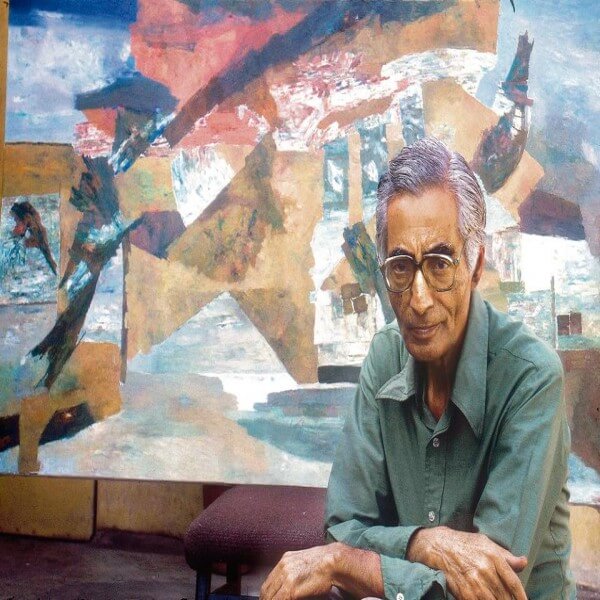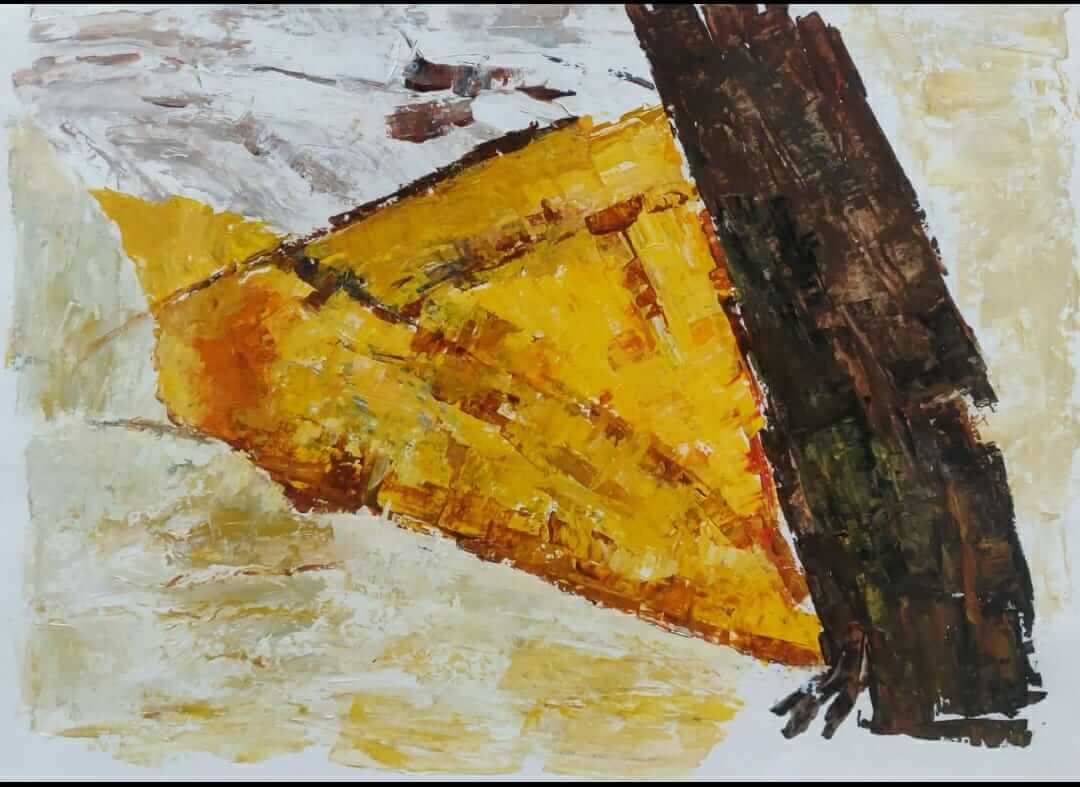Ram kumar
ABOUT
National Gallery of Modern Art, New Delhi
Painter | India
Born in 1924

Ram kumar , one of india’s leading painters’ is known for his abstract paintings. He was associated with the legendary progressive artists group, which boasted of artists such as m.f husain and s.h raza among others. Ram Kumar was born in Shimla, Himachal Pradesh, in 1924. Kumar’s father was a government employee working for the Civil and Administrative division under the British Government. Kumar grew up in large, middle-class household with his eight brothers and sisters. After completing his graduate education, Kumar enrolled at the St. Stephen’s College in Delhi to pursue an M.A. in economics. While studying there, he happened to go to an art exhibition being held in New Delhi’s Connaught Place area. Fascinated, Kumar returned to the show several times. As his interest grew Kumar started to take classes under Sailoz Mukherjee at the Sharda Ukil School of Art. In 1948, Kumar gave up his bank job to pursue art full time. Building a Career While at the Sarada Ukil School of Art, Kumar met and befriended prominent artist S.H Raza. Through this association, Kumar aligned himself to the philosophy and aesthetics of the Progressive Artists Movement, an art movement pioneered in the 1950s and 1960s that was to profoundly influence art practice in India. Eager to expand his artistic horizons, Kumar convinced his father to buy him a one-way ticket by boat to Paris. In Paris, Kumar studied art under Fernand Léger and Andre Lhote. Greatly influenced by the pacifistic movement, Kumar joined the French Communist Party while in France. Kumar’s individual style developed and he began painting highly abstract landscapes. Drawing from Hindu spiritual ideas of renunciation and enlightenment, the artist’s vision gradually turned inward. From his early days one of Kumar’s preoccupation has been the human condition. This manifested itself as the alienated city-dweller in his early works. His later works centered on the ancient pilgrimage town of Varanasi, showing cramped dwellings that signified a sense of hopelessness. Kumar also writes short stories in the Hindi language and four volumes of his works have been published. Honors By the 1950s, Kumar had shown at many solo and group shows. These included the Tokyo Biennale in 1957 and 1970, the Venice Biennale in 1958, and the Sao Paulo Biennale in 1961, 1965 and 1972. The Indian government honored Kumar with the Padmashree in 1972 and the Padma Bhushan in 2010. Kumar was married to Vimla Ram Kumar and together they have a son. Kumar currently lives and works in New Delhi. Famous Artworks “Vagabond,” 1956 “Orphans,” 1956 “Boy and Goat,” 1956 “Composition,” 1958 “Spring,” 1966 “Ruins,” 1970 “Yellow Summer,” 1972 “Benares Landscape,” 1997 Major Exhibitions 1957 - Tokyo Biennale 1958 - Venice Biennale 1959 - Sao Paulo Biennale 1968 - Dhoomimal Art Gallery, New Delhi 1974 - Gallery Chemould, Mumbai 1979 - Chanakya Gallery, New Delhi 1980 - Art Heritage, New Delhi 1986 - Pundole Art Gallery, Bombay 1988 - Alliance Francaise, New Delhi 1991 - Chitrakoot Gallery, Kolkata 1993 - Vadehra Art Gallery, New Delhi 1996 - Pundole Art Gallery, Mumbai 2006 - Grosvenor Vadehra, London 2008 - Aicon Gallery, New York 2009 - Vadehra Art Gallery, New Delhi 2010 - Aicon Gallery, New York 2011 - Aicon Gallery, New York 2011 - Chawla At Gallery, New Delhi 2011 - Sakshi Gallery, Mumbai Museums/Collections Jehangir Nicholson Art Foundation, Mumbai Allahabad Museum National Gallery of Modern Art, New Delhi Books/Publications “Ram Kumar: A Journey Within” by Gagan Gill “Ram Kumar: The Face and Other Stories” by Ram Kumar “Art Reinterprets Art: God, Sex, Money in Western and Indian Art” by Ram K. Piparaiya

